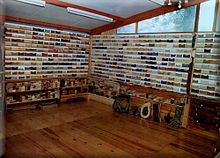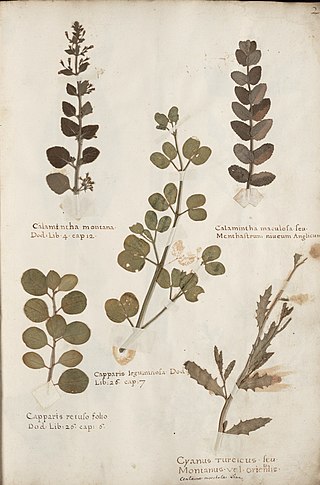| Index xylariorum Code | Institution Name |
| Aw | CAMBRIDGE: Harvard University. |
| ALCw | ALCOBAÇA; Estação de Experimentação Florestal. |
| AMw | AMLAI: Birla Institute of Scientific Research. |
| ARw | YEZIN: Forest Research Institute. |
| Bw | BERLIN-DAHLEM: Botanischer Garten und Botanisches Museum Berlin-Dahlem. |
| BBSw | PARAMARIBO; Surinam Forest Service. |
| BCTw | SÃO PAULO: Instituto de Pesquisas Tecnológicas do Estado de São Paulo. |
| BHVs | BERLIN: Museum für Naturkunde der Humboldt-Universität zu Berlin. |
| BISHw | HONOLULU: Bemice P. Bishop Museum. |
| BKFw | BANGKOK: Royal Forest Department. |
| BMw | LONDON: British Museum (Natural History). |
| BOFw | BOGOTÁ: Instituto de Investigaciones Forestales y Madereras. |
| BPw | BUDAPEST: Hungarian Museum of Natural History. |
| BRIw | BRISBANE: Queensland Herbarium. |
| BSILw | LUCKNOW: BirbalSahni Institute of Paleobotany. |
| BULHw | BULOLO: Papua New Guinea Forestry College. |
| BWCw | SYRACUSE: College of Environmental Science and Forestry. |
| BZFw | BOGOR: Lembaga Penelitian Hasil Hutan (Forest Products Research Institute). |
| CAFw | BEIJING: Chinese Academy of Forestry. |
| CANBw | CANBERRA: Australian National Herbarium. |
| CEPECw | ILHÉUS: Centro de Pesquisas do Cacau. |
| CHITw | CHTITAGONG: Forest Research Institute. |
| CHNw | CHRISTCHURCH: University of Canterbury. |
| CHRw | CHRISTCHURCH: Department of Scientific and Industrial Research. |
| CLPw | COLLEGE: Forest Products Research and Development Institute. |
| CONCw | CONŒPCIÔN: Universidad de Concepción. |
| CQTw | BRISBANE: Queensland Department of Forestry. |
| CTBw | PARIS: Centre Technique du Bois et de l'Ameublement. |
| CTFw | NOGENT-SUR-MARNE: Cenfre Technique Forestier Tropical. |
| CVRDw | LINHARES: Reserva Florestal da CVRD. |
| Dw | DELFT: TNO Timber Research Institute. |
| DBw | DUBLIN: University College. |
| DDw | DEHRADUN: Forest Research Institute and Colleges. |
| DEQw | QUITO: Instituto Ecuatoriano de Ciencias Naturales. |
| DREw | DRESDEN: Wissenschaftlich-technisches Zentrum der holzverarbeitenden Industrie. |
| ECw | HEREDIA: Universidad Nacional. |
| EIFw | SANTIAGO: Universidad de Chile. |
| ESAw | PIRACICABA: Universidade de São Paulo. |
| FHIw | IBADAN: Forest Research Institute of Nigeria. |
| FHOw | OXFORD: University of Oxford. |
| FIw | FLORENCE: Herbarium Universitatis Florentinae and Erbario Tropicale di Firenze. |
| FLw | FLORENCE: Istituto per la Ricerca sul Legno. |
| FLASw | GAINESVILLE: University of Florida. |
| FPAw | HIGHETT: Commonwealth Scientific and Industrial Research Organization. |
| FPBw | BRASÍLIA: Instituto Brasileiro de Desenvolvimento Florestal. |
| FRw | FRANKFURT AM MAIN: Naturmuseum und Forschungsinstitut Senckenberg. |
| FRIGw | GUANGZHOU: Forest Research Institùte of Guangdong Province. |
| GTw | GEORGETOWN: Guyana Forestry Commission. |
| HBw | HAVANA: Centro de Investigación Forestal. |
| HBRw | ITAJAÍ: Herbário "Barbosa Rodrigues." |
| HEFw | HEFEI: Anhui Agricultural College. |
| HMw | LONDON: The Homiman Museum and Library. |
| IFPw | SHENYANG: Institute of Forestry and Pedology. |
| IICAw | TURRIALBA: Universidad de Costa Rica. |
| IJw | KINGSTON: Institute of Jamaica. |
| INPAw | MANAUS: Instituto Nacional de Pesquisas da Amazônia. |
| ITAw | MANAUS: Instituto de Tecnologia da Amazônia. |
| JARIw | MONTE DOURADO: Superintendência de Pesquisa Florestal. |
| Kw | KEW: Royal Botanic Gardens, Economic and Conservation Section. |
| KARw | KARAJ: College of Natural Resources. |
| KEPw | KEPONG: Forest Research Institute Malaysia. |
| K-Jw | KEW: Royal Botanic Gardens, Jodrell Laboratory. |
| KNw | KAMPALA: Nakawa Forest Research Institute. |
| KYOw | KYOTO: Kyoto University. |
| Lw | LEIDEN: Rijksherbarium. |
| LAEw | LAE: Department of Forests. |
| LEw | LENINGRAD: V. L. Komarov Botanical Institute. |
| LILw | TUCUMÁN: Instituto Miguel Lillo. |
| LISJCw | LISBON: Jardim e Museu Agrícola Tropical. |
| LIVw | LIVERPOOL: Liverpool Museum. |
| LNECw | LISBON: Laboratório Nacional de Engenharia Civil. |
| MADw | MADISON: U.S. Forest Products Laboratory. |
| MADRw | MADRID: Instituto Nacional de Investigaciones Agrarias. |
| MAD-SJRw | MADISON: U.S. Forest Products Laboratory. |
| MCSw | MILAN: Civico Museo de Storia Naturale. |
| MEDELw | MEDELLIN: Universidad Nacional. |
| MERw | MÉRIDA: Universidad de los Andes. |
| MEXFW | MÉXICO: Instituto Nacional de Investigaciones Forestales. |
| MEXUw | MÉXICO: Universidad Nacional Autónoma de México. |
| MGw | BELÉM: Museu Paraense Emilio Goeldi. |
| MICHw | ANNARBOR: University of Michigan. |
| MUNw | MUNICH: Universität München. |
| NATw | ILANOTH: Agricultural Research Organisation. |
| NINw | MANAGUA: Nicaraguan Institute of Natural Resources and Environment. |
| NMWw | CARDIFF: National Museum of Wales. |
| NYw | BRONX: The New York Botanical Garden. |
| NYJw | PORTLAND: World Forestry Center. |
| OLw | OTTAWA: Forintek Canada Corporation. |
| PACw | RALEIGH: North Carolina State University. |
| PATw | PARIS: Muséum National d'Histoire Naturelle. |
| PFPw | PRETORIA: South African Forestry Research Institute. |
| PMPw | BOROKO: Forest Products Research and Development Centre. |
| PRFw | PRINCES RISBOROUGH: Building Research Establishment. |
| PTw | PRAGUE: Timber Research and Development Institute. |
| RBw | RIO DE JANEIRO: Jardim Botânico do Rio de Janeiro. |
| RBHw | HAMBURG: Bundesforschungsanstalt für Forst- und Holzwirtschaft. |
| RFw | ROSENHEIM: Fachhochschule Rosenheim. |
| RPPRw | RIO PIEDRAS: Instituteof Tropical Forestry. |
| RSAw | CLAREMONT: Rancho Santa Ana Botanic Garden. |
| RTIw | AMSTERDAM: Royal Tropical Institute. |
| SANw | SANDAKAN: Forest Research Centre. |
| SARFw | KUCKNG: Forest Department. |
| SFCw | BEECROFT: Forestry Commission of New South Wales. |
| SPw | SÃO PAULO: Instituto de Botânica. |
| S-PAw | STOCKHOLM: Swedish Museum of Natural History. |
| SPSFw | SãO PAULO: Instituto Florestal de São Paulo. |
| STEw | STELLENBOSCH: University of Stellenbosch. |
| SVw | HAVANA: Academia de Ciencias de Cuba. |
| SWTw | STOCKHOLM: Swedish Institute for Wood Technology Research. |
| SYSw | GUANGZHOU: Sun Yat-Sen University. |
| SZDw | SZEGED: Universitatis Szeged. |
| Tw | TERVUREN: Koninklijk Museum voor Midden-Afrika (Musée Royal de l'Afrique Centrale). |
| TAIw | TAIPEI: National Taiwan University. |
| TAIFw | TAIPEI: Taiwan Forestry Research Institute. |
| TAUw | THESSALONIKI: Aristotelian University. |
| TIPw | RECIFE: Fundação Instituto Tecnológico do Estado de Pernambuco. |
| TOFOw | TOKYO: University of Tokyo. |
| TRTw | TORONTO: University of Toronto. |
| TSFw | THARANDT: Technische Universität Dresden. |
| TWTw | TSUKUBA: Forestry and Forest Products Research Institute. |
| Uw | UTRECHT: Rijksuniversiteit te Utrecht. |
| UCw | RICHMOND: University of California. |
| UCNWw | BANGOR: University College of North Wales. |
| USw | WASHINGTON: Smithsonian Institution. |
| VENw | CARACAS: Instituto Botánico. |
| VFw | VIENNA: Forstlichen Bundesversuchsanstalt. |
| VLw | VANCOUVER: Forintek Canada Corporation. |
| WAGw | WAGENINGEN: Department of Plant Taxonomy, Agricultural University. |
| WDw | WINTERTHUR: The Henry Francis du Pont WinterthuT Museum. |
| WFw | ADELAIDE: Woods and Forest Department. |
| WIBw | WAGENINGEN: Department of Forestry Techniques, Agricultural University. |
| WLw | WAGENINGEN: Botanisch Laboratorium. |
| WZw | ROTORUA: Forest Research Institute. |
| XALw | XALAPA: Instituto Nacional de Investigaciones Sobre Recursos Bióticos. |
| YANw | YANGLING: Northwestern College of Forestry. |
| ZAw | ZAGREB: University of Zagreb. |
| ZTw | ZÜRICH: Eidgenössische Technische Hochschule. |



















